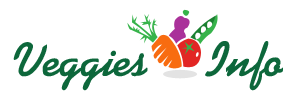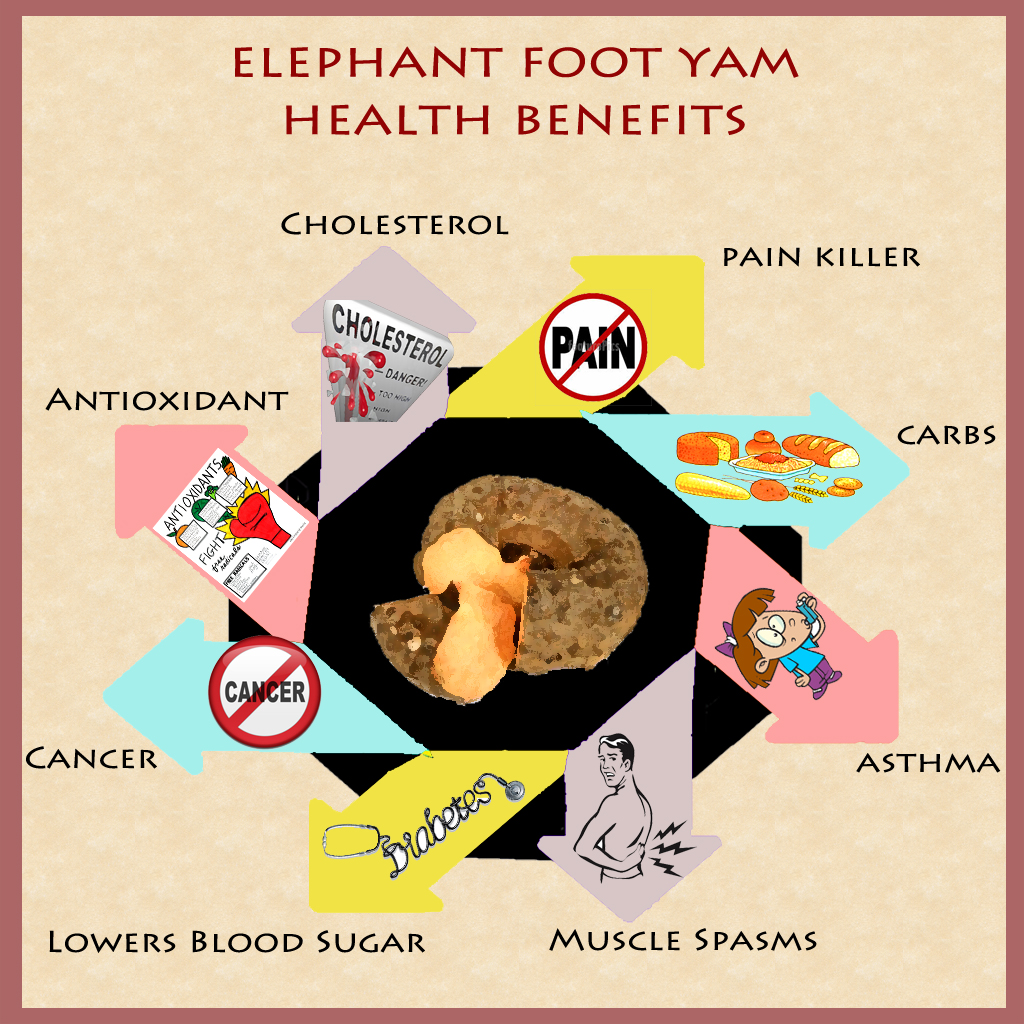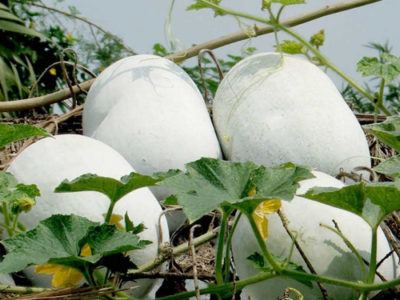

Elephant Foot yam Health Benefits
Elephant Foot Yam
Plants and trees play an important role in this planet and humans generally ignore its importance. Earth was filled with millions of plants which has dwindled drastically due to population explosion and other man made evils. Earth teaches many lessons to human beings but they seldom listen to them. This topic will deal with a plant named elephant foot yam which is abundantly found in Africa, South Asia, and the tropical Pacific islands. The botanical name of this plant is Amorphophallus paeoniifolius and this plant is raised as cash crop. Elephant yam comes under the family araceae and kingdome plantae. The other common names of this plant are whitespot giant arum, elephant yam, stink lily and telinga fruit.
The male and female flowers are on the same plant and are crowded in cylindrical masses. This plant emits a putrid smell. The tubers contain large amounts of carbohydrates and these tubers are consumed by Indians especially in south India. These plants also grow in Sri Lanka, Philippines, Malaysia, Indonesia and other such countries.
Medicinal Uses
- The elephant-foot yam is a widely used medicine and is a divine cure for bronchitis, asthma, abdominal pain, emesis, dysentery and other such diseases.
- The tubers weigh almost 30 lbs and have many health benefits. Since the yam’s large tuber resembles an elephant foot thus the name “Elephant Foot Yam”.
- This vegetable has proteins, carbohydrates, cholesterol lowering chemicals, omega 3 fatty acids and is rich in fibers.
- Yam is rich in vitamins, minerals, proteins and iron.
Cultivation
Generally these plants undergo a dormancy period of 60 days. During this dormancy period the farmers plant the seeds. The planting months will be during February-March so that the seeds would sprout during the pre-monsoon period. More than 3500 kgs of corms are needed to plant one hectare. Elephant yam is used while preparing gravy curries, chutneys, bharta, finger sticks, pickles and french fries.
| Principle | Nutrient Value |
|---|---|
| Energy (Calories) | 158 Cal Kcals/Calories |
| Water | 9504 |
| Protein | 2g |
| Fat | 0.2g |
| Carbohydrates | 37g |
| Starch | ~ |
| Sugar | 1g |
| Fibre | 5g |
| Alcohol | ~ |
| Saturated fatty acids | 0.0g |
| Polyunsaturated fatty acids | 0.0g |
| Trans fatty acids | ~ |
| Cholesterol | 0g |
| Vitamins | |
| Vitamin A | 19 |
| Retinol Equivalent | ~ |
| Vitamin D | ~ |
| Vitamin E | 0.5mg |
| Vitamin K1 | 3.1mcg |
| Thiamin | 0.1 mg |
| Riboflavin | 0.0mg |
| Niacin | 0.8 mg |
| Niacin Equivalent | ~ |
| Vitamin B6 | 0.3 mg |
| Vitamin B12 | 0.0 mcg |
| Folate | 21.8 mcg |
| Pantothenate | 0.4 mg |
| Biotin | ~ |
| Vitamin C | ~ |
| Minerals | |
| Sodium | 10.9mg |
| Potassium | 911mg |
| Calcium | 19.0 mg |
| Magnesium | 24.5 mg |
| Phosphorus | 66.6 mg |
| Iron | 0.7 mg |
| Copper | 0.2 mg |
| Zinc | 0.3 mg |
| Chloride | ~ |
| Manganese | 0.5 mg |
| Selenium | 1.0 mcg |
| Iodine | ~ |
Note
These vegetables are very itchy in nature and by eating this you people feel a itching sensation in their throat and mouth.



